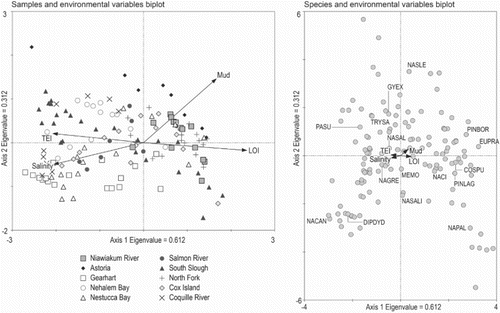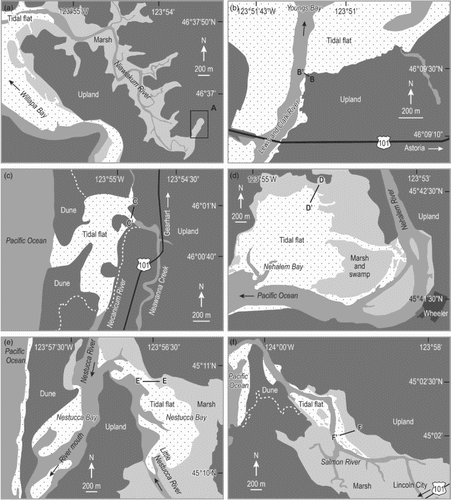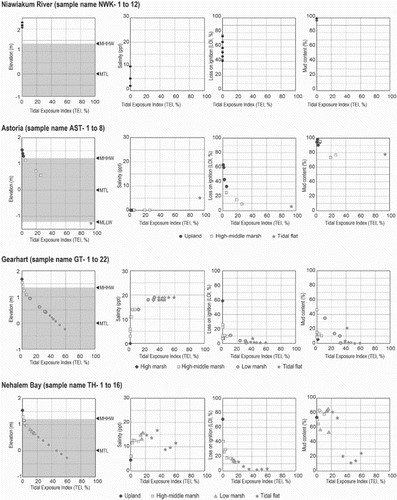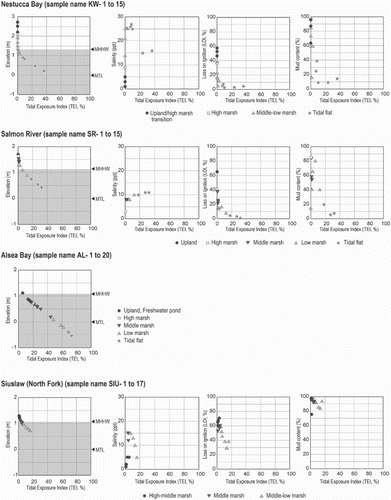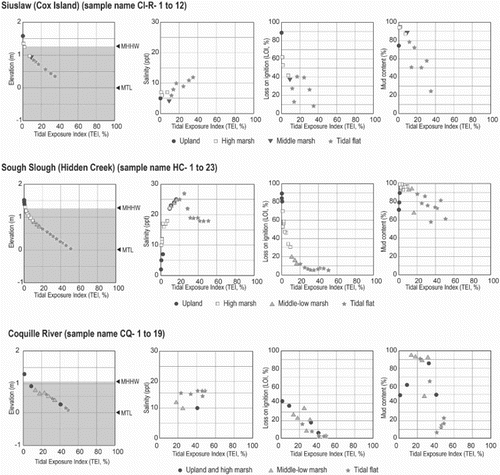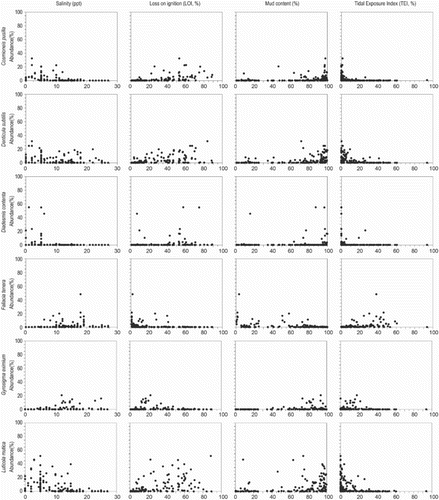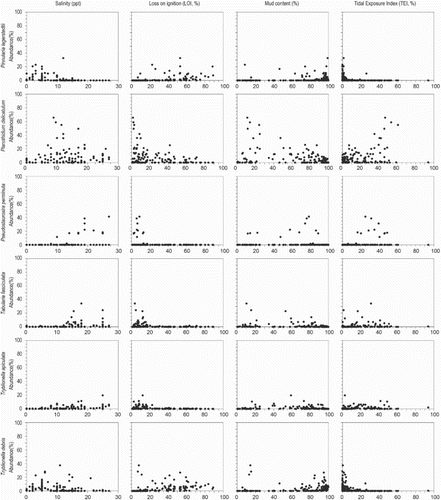Figures & data
Fig. 1. Location of study sites (filled circles) along the coast of Oregon and Washington in the northwestern United States. Triangles indicate tide gauge stations (labeled in gray).
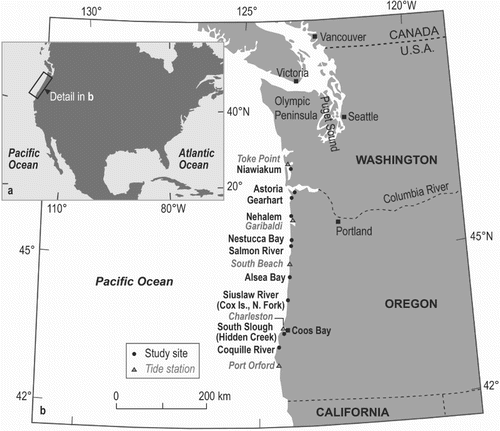
Fig. 3. Data analysis of diatom assemblages at the Salmon River (Oregon, USA). (a) A diagram of the studied transect at the Salmon River. Vertical and horizontal axes represent elevation (m) relative to MTL and distance (m), respectively. Surface samples were collected across four recognizable environmental zones: tidal flat, low marsh, middle marsh, high marsh, and supratidal. Dominant vascular plant species are listed for zones. (b) Changes in abundance (%) of dominant diatom species along the transect. (c) Result of agglomerative hierarchical cluster analysis. (d) DCA results for diatom distribution in the 14 surface samples.
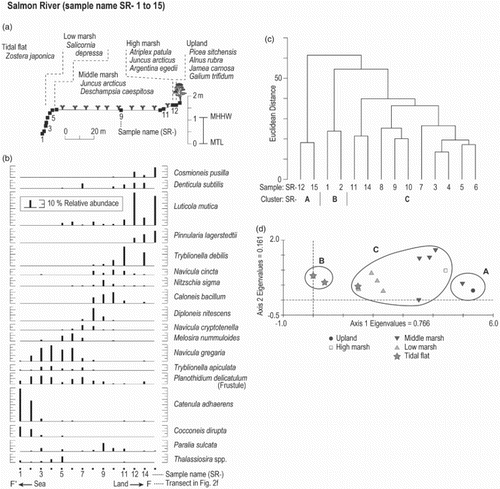
Fig. 6. Results of detrended correspondence analysis (DCA) showing patterns of variation in diatom sample assemblages for the combined regional dataset. The environmental variables were added as supplementary variables. Numbers of samples at each site are shown in Table A1.
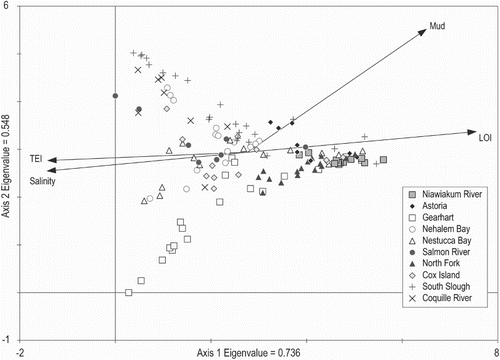
Fig. 7. Results of canonical correspondence analysis (CCA) for the combined regional dataset: (Left) sample-environment bi-plots. (Right) species-environment bi-plots. Species abbreviations are as follows: Cosmioneis pusilla (COSPU), Diploneis didyma (DIPDYD), Eunotia praerupta (EUPRA), Gyrosigma eximium (GYEX), Melosira moniliformis (MEMO), Navicula cancellata (NACAN), Navicula cincta (NACI), Navicula gregaria (NAGRE), Navicula palpebralis (NAPAL), Navicula salinicola (NASALI), Navicula salinarum (NASAL), Navicula slesvicensis (NASLE), Paralia sulcata (PASU), Pinnularia borealis (PINBOR), Pinnularia lagerstedtii (PINLAG), and Tryblionella salinarum (TRYSA).
